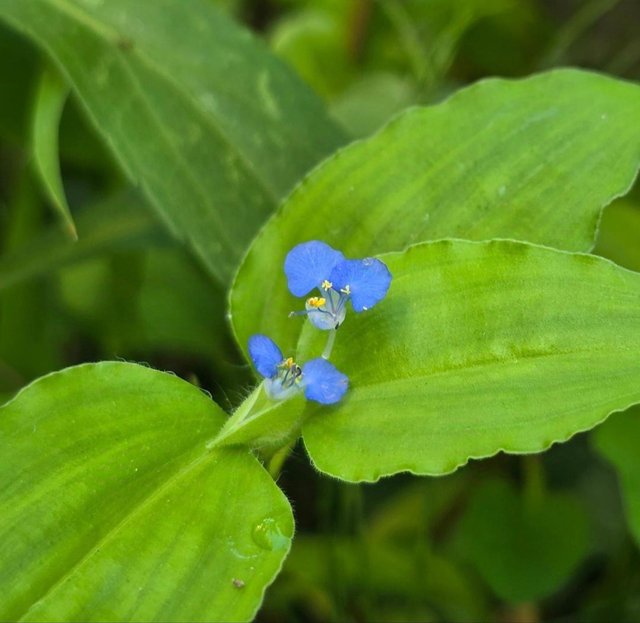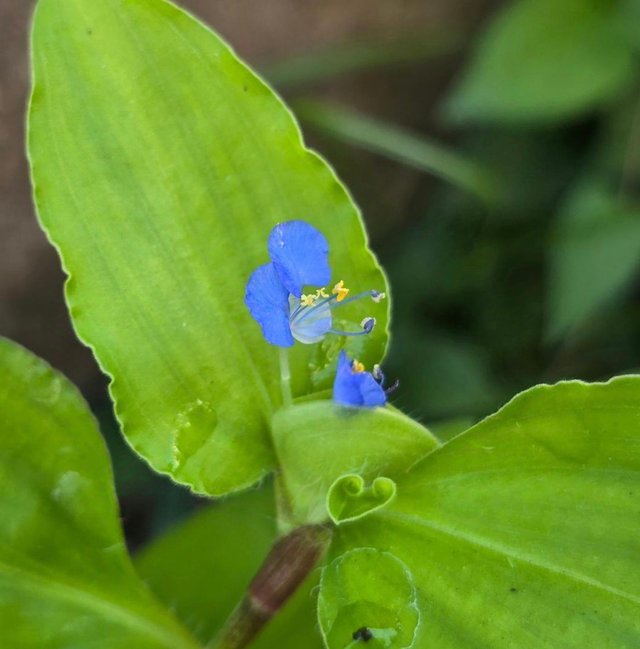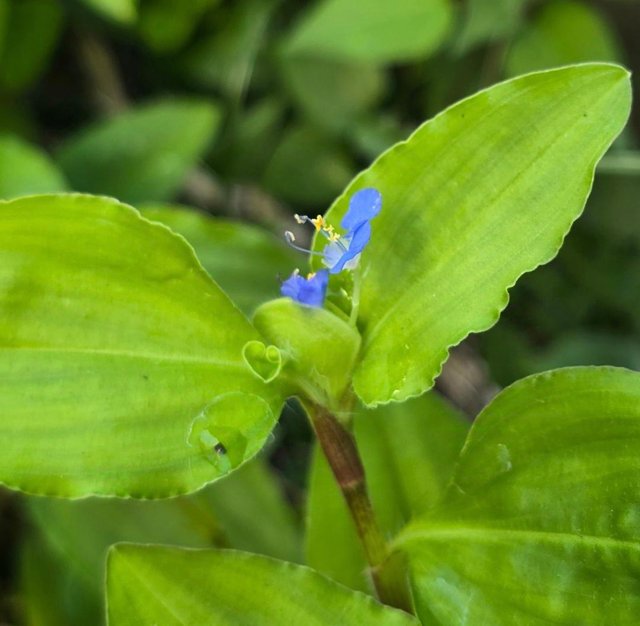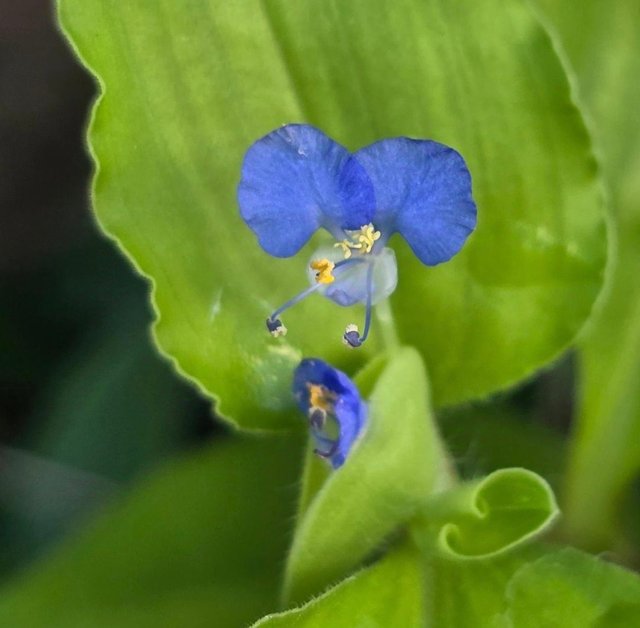



The Asiatic dayflower is a fascinating and visually striking plant, native to East Asia but widely spread across other regions, including North America and Europe. This small, delicate annual herb is known for its vibrant blue flowers, which bloom for a single day, hence its common name. Despite the brevity of their bloom, Asiatic dayflowers are beloved by gardeners and botanists for their unique beauty and ecological significance.Commelina communis commonly known as the spiderwort or dayflower family. The plant grows upright, typically reaching 20-80 cm in height, though it can sometimes sprawl across the ground. Its stems are smooth, thin, and somewhat weak, often leaning over and rooting at the nodes. The leaves are lance-shaped, bright green, and sheathed at the base, with smooth or slightly wavy edges.
The flowers, which are the true highlight of the plant, are asymmetrical and distinctly shaped. Each bloom has three petals: two large, bright blue petals at the top and a smaller, almost inconspicuous white or pale-colored petal at the bottom. The blue petals give the flower an almost "butterfly-like" appearance. Along with the petals, the plant’s yellow stamens provide a stark color contrast. These flowers are ephemeral, typically opening early in the morning and withering by the afternoon. However, new blooms often appear each day during the flowering season, which usually extends from mid-summer to early autumn.
Asiatic dayflowers thrive in moist, fertile soils and are often found in disturbed areas such as roadsides, gardens, and forest edges. They prefer partial shade but can tolerate full sun and grow easily in a variety of soil types, which is one reason they are considered somewhat invasive in certain parts of the world. In areas where conditions are right, they can spread rapidly.The plant reproduces primarily through seed, which is produced in capsules that split open when mature. In favorable conditions, it can self-seed and establish a dense patch of plants. The rapid growth and spreading ability of Commelina communis have led to its classification as a weed in some regions, particularly in agricultural fields where it competes with crops for resources.
Despite being considered invasive in some areas, the Asiatic dayflower plays an important ecological role. Its flowers provide a nectar source for pollinators, including bees, butterflies, and other insects. The plant is also a host for certain species of caterpillars, contributing to the broader food web. Furthermore, its ability to grow in disturbed soils helps to stabilize and reclaim areas that have been eroded or degraded, making it an important pioneer species in ecological succession.
